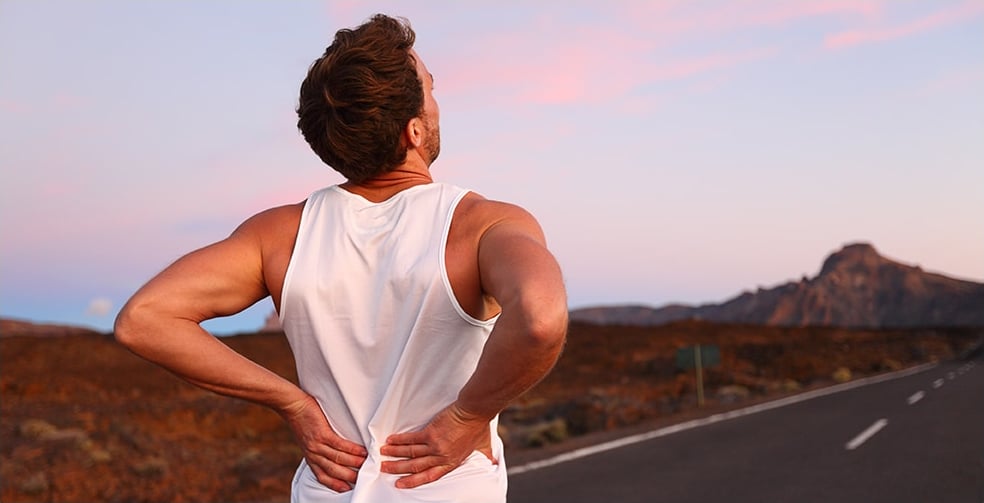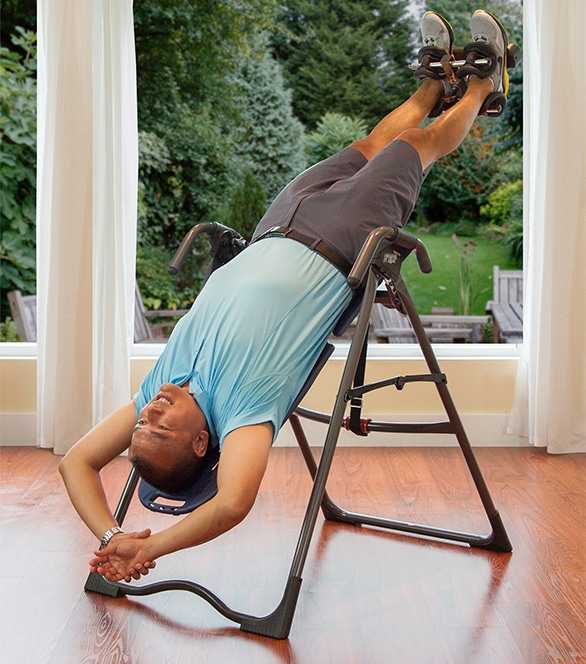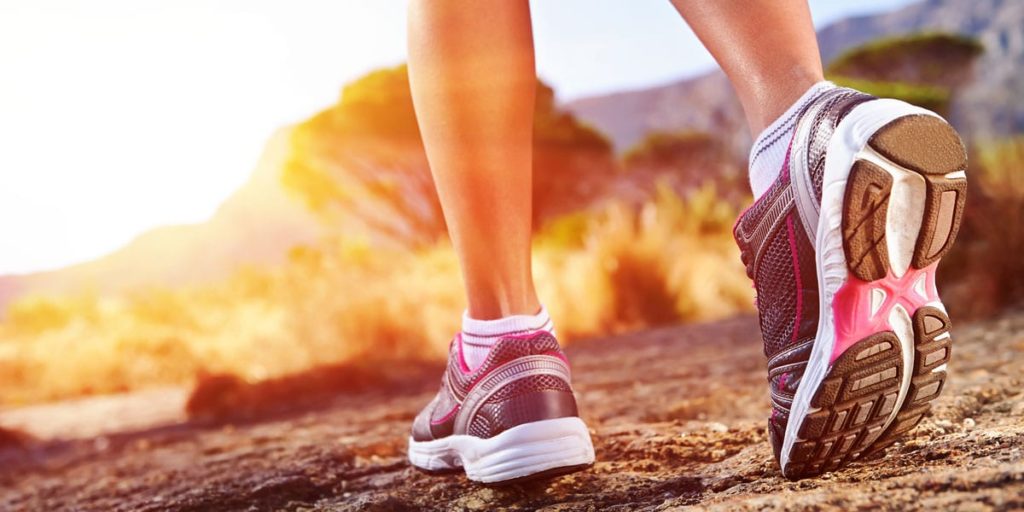Inverted Decompression Advantages for Runners with Lower Back Pain
Here’s some good news for you runners: researchers have discovered that lower back pain is less of an issue for athletes than those who aren’t active. In fact, when looking at runners, in particular, studies have shown no connection between lower back pain and long-distance running.
But that doesn’t make the back pain any less of a nuisance for those runners who do experience it. Running involves repetitive stress and compression of all the joints, sometimes for long periods of time. For those runners with existing back issues, that pain can be exacerbated by the activity.
So what causes lower back pain in runners and what can you do to avoid it?

Back Pain Symptoms in Runners
There are three main complaints that runners have regarding lower back pain.
Temporary muscular pain, or muscle spasms, can come on suddenly and feel as though your muscles have locked up or gripped themselves tightly. This pain can be quite severe and distressing.
Shooting or radiating pain that travels down the back of one or both legs is commonly known as sciatica. This type of pain is often caused by a pinched nerve and may have underlying causes such as a herniated disc.
Chronic pain or aching in the lower back can sometimes indicate arthritis, but it is also a sign of overuse. You may feel the aching across your entire lower back, or it may be pinpointed to a smaller area.
Causes of Back Pain in Runners
Back pain can be caused by activity or inactivity – the truth is that are a variety of underlying issues can be the root of the problem, from lifestyle choices to the way you run. Here are the most common causes of back pain in runners:
- Lack of Hip Mobility: According to a study in the Journal of Orthopaedic & Sports Physical Therapy, “runners were found to be significantly limited in the movement of hip flexion.”1 Being less flexible in the hip region combined with tight hamstrings can cause the pelvis to rotate forward or backward. This displacement creates unnecessary stress on the spine.
- Lack of Core Stability: Similar to how flexibility can affect the alignment of the pelvis and spine, the muscles surrounding the spinal column have a great impact on the alignment of the vertebrate. Having a weak core (both abdominals and lower back muscles) can put extra strain on the spine as it tries to stabilize the connection of lower and upper body as you run.
- Poor Posture: While poor running posture can cause lower back pain, many studies have found that sitting all day in an office is one of the worst culprits of both poor posture and lower back pain.
- Structural Issues: Your spine is made up of many smaller bones called vertebrae and between each of these, is a small squishy disc that helps to cushion the bones during compression and movement. When these discs do not receive proper hydration and rest, they can become herniated. This means that the disc has a tear and part of the squishy innards are protruding out and pushing on the nerves in your spinal column. Degenerative disc disease is also a structural issue that running can provoke
Repetitive Stress and Compression: Running on hard materials, such as concrete or asphalt, causes a slight jarring and compression of the spine with each step. Over time, the spine and lower back muscles become worn out and stressed causing pain, and even reducing your height! A study done in 1990 at Sunderland Polytechnic found significant correlations between time and pace of a run, and how much height participants lost.2

Solutions to Runner’s Lower Back Pain
There are many solutions and exercises that will help ease the lower back pain for many runners.
- Strengthen core muscles and increase hip mobility: Strengthening the core muscles and increasing flexibility in the hips will both decrease your pain level and improve your run time. Simple exercises and stretches can help you achieve greater strength and flexibility.
- Change up the running surface: Concrete and asphalt surfaces are hard on your spine because of the jolt created with each step. Running on trails or synthetic track surfaces will use different muscles in your body and reduce the impact on your spine.
- Try different running shoes: Switching out your shoes can change your posture due to different placements of support in the soles. Shoes should also be replaced anywhere from 300-500 miles after the first wear. For a runner doing 6 miles a week, that means replacing your shoes about every year.
- Decompression of spinal discs: Finding a way to reverse the high-impact, compressive nature of the sport is key to recovery. The best way to perform decompression is on a Teeter Inversion Table. These tables provide a stable surface for inverted decompression and use gravity to help you get the best stretch. Not only does taking the pressure off the discs in the spine help them to rejuvenate, but it provides a whole-body stretch unlike anything else you’ve experienced.
Benefits of Inverted Decompression for Runners
Inverted decompression helps not only your spinal discs, but increases flexibility and allows for greater stretches in other areas of your body such as your legs, hips, upper back, and shoulders. Inversion with a Teeter also helps to elongate and realign your spine, thus relieving muscle tension.

Another benefit of inversion therapy for runners with lower back pain is a reduction in pain level. In a study conducted by Sheffield, patients who were unable to work due to back pain were treated with inversion and after just eight sessions, 89% returned to their jobs full time! The authors concluded that the main basis for improvement was the stretching of the paraspinal muscles and widening of the intervertebral discs from the inverted decompression.
While there are many causes and solutions for combating lower back pain in runners, inversion therapy and inverted decompression cover the most ground. As Josh, a middle school principal and half-marathon runner says, “Now that I’ve experienced training with a Teeter, I definitely wouldn’t want to be without one.”
Find Relief Now. Pay Later.
Now you can try Teeter in your own home FREE for 30-Days, 0% APR* with Affirm.
